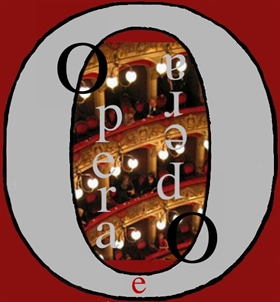By Natalia Dantas-
Dance show for the resumption of the XIII Festival internazionale del teatro romano di Volterra on July 27, 2015, with an illustrious protagonist: Maria Callas.
It was fascinating to see and hear the magical archaeological remnant of her environment, image and voice; the first projected on the ruins of the ancient Roman Theatre, the second scene, both spoken and Sung, spread by technical means; the latter paid to choreography by Alberto Basket which gave life pleasing by his evocative costumes dancers dressed.
Confront icons as Maria Callas is no mean feat and tried to pick its own dramaturgy Laura Agostini, who held a symbolic thread, the clarity of which perhaps would be beneficial a prologue that included the public expert of cryptic moments callassiana biography.
But above all, always for that principle that it is not easy to approach a sacred monster like the protagonist, questionable was the choice of music. In fact, while it is true that the show was dedicated to the famous songs of his were heard Callas and repertoire, it is true that certain choices from the Baroque repertoire and the voice of other nineteenth-century operatic singers little is context-bound, the most popular diva, from which we could draw, however, dance music of the highest level of the most famous works , especially in Italy and France, in which the great singer, he excelled. Like, in the same way, one could wander into lesser known repertoire sung by Callas, but no less valuable and evocative.
An evening that offered significant moments for the public, which still showed to like the show accentuate with long applause.
© Natalia Dantas
“Alberto Basket determines in this new production a significant link between dance and dramaturgy by choosing to work closely with Laura dramaturgical and directing the implementation of the show. Agostini A wonderful trip in the word "quiet" gesture by the interpretation of the dancers. We chose to revive the scene the woman's essence and soul of the female characters that made it famous, in a game of mirrors between private life and artistic life. And always through the dance we wanted to retrace his intimate personal drama Opera moments in antithesis to the ephemeral beauty of public life with masquerade balls attended in ease of La Dolce Vita.
 I costumi, tutti disegnati e creati a mano dallo stesso Alberto Canestro, sono stati concepiti come elementi del movimento e della drammaturgia stessa. Ogni costume è una creazione amata e voluta per vestire l’anima della danza. Siamo entrati delicatamente, in punta di piedi, nella vita di Maria Callas, nella sua biografia, nella sua Arte, il canto, per riconoscere nel suo “sguardo” la sua Essenza di Donna e Artista. Oltre la Voce, incantati dal suo sguardo di Artista, determinata nell’affermarsi attraverso la disciplina, il rigore, la fedeltà allo studio del canto, sguardo che svela tutta la sua brillantezza per il successo ed il potere che deriva dall’esser “Regina”, dall’esser “Divina”. Ma come la faccia nascosta e oscura della luna, lo sguardo di Maria Callas svela anche la sua ombra, la fragilità, la nostalgia quale sentimento profondo dell’anima che richiama alle proprie origini. Sguardo che rivela lo struggimento che si prova aspettando un ritorno, la mancanza che provoca il dolore di un matrimonio svanito, di un figlio perduto, della transitorietà e della vanità delle cose terrene e della fugacità del tempo. In questo nostro viaggio affascinante alla scoperta di Maria Callas abbiamo incontrato Callas l’Artista, rigorosa musicista e cantante ma, anche e soprattutto, Maria, la Donna nel suo percorso tra vita artistica e vicenda umana.
I costumi, tutti disegnati e creati a mano dallo stesso Alberto Canestro, sono stati concepiti come elementi del movimento e della drammaturgia stessa. Ogni costume è una creazione amata e voluta per vestire l’anima della danza. Siamo entrati delicatamente, in punta di piedi, nella vita di Maria Callas, nella sua biografia, nella sua Arte, il canto, per riconoscere nel suo “sguardo” la sua Essenza di Donna e Artista. Oltre la Voce, incantati dal suo sguardo di Artista, determinata nell’affermarsi attraverso la disciplina, il rigore, la fedeltà allo studio del canto, sguardo che svela tutta la sua brillantezza per il successo ed il potere che deriva dall’esser “Regina”, dall’esser “Divina”. Ma come la faccia nascosta e oscura della luna, lo sguardo di Maria Callas svela anche la sua ombra, la fragilità, la nostalgia quale sentimento profondo dell’anima che richiama alle proprie origini. Sguardo che rivela lo struggimento che si prova aspettando un ritorno, la mancanza che provoca il dolore di un matrimonio svanito, di un figlio perduto, della transitorietà e della vanità delle cose terrene e della fugacità del tempo. In questo nostro viaggio affascinante alla scoperta di Maria Callas abbiamo incontrato Callas l’Artista, rigorosa musicista e cantante ma, anche e soprattutto, Maria, la Donna nel suo percorso tra vita artistica e vicenda umana.  We loved this incredible theatrical personality reflected in the voice and the story of Maria equally fascinating, one of the great tragedies of our time. It is with the language of dance, body, we want to return that sense of peace, hope and beauty that comes from feeling that no love is lost ... You "... little bird with powerful voice of Eagle and Eagle trembling" "(Source: Roman Theatre Festival Volterra)
We loved this incredible theatrical personality reflected in the voice and the story of Maria equally fascinating, one of the great tragedies of our time. It is with the language of dance, body, we want to return that sense of peace, hope and beauty that comes from feeling that no love is lost ... You "... little bird with powerful voice of Eagle and Eagle trembling" "(Source: Roman Theatre Festival Volterra)
Choreography-Alberto Basket; Dramaturgy by Laura Agostini; Lighting design-Clare Zecchi; Costumes-Alberto Basket
PHOTO LEONARDO IMPELLIZZERI & STEPHEN I GET ENGAGED
© Natalia Dantas, operaeopera.com




